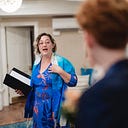Member-only story
Identity in the Window: Visibility and Safety
Our Sages taught: The Hanukkah lamp — it is a commandment to place it at the door of one’s house, on the outside. And if one lives in an attic, place it in a window adjoining the public area. (Babylonian Talmud Shabbat 21a)
Placing a Hanukkah menorah in the front window of one’s house isn’t a way to compete with the Joneses next door and their electricity-guzzling Christmas light display. No, it is a rabbinic mandate. It is how we fulfill our obligations as members of the Jewish people celebrating an ancient, but relatively minor, holiday.
The story of Hanukkah is complex, and its central characters, the Maccabees, aren’t necessarily the benevolent heroes we make them out to be. At its core, Hanukkah is a story about the universal and the particular, and battle staged between the two. From the fundamentalist Maccabees, who criticized not only the king Antiochus and his rules, but their own Jewish neighbors who assimilated, adopting Hellenist culture and custom, to the Jews of Enlightenment-age Europe, who put their faith in lofty but ultimately flawed and exclusionary notions of “liberty, equality, and fraternity.” Perhaps the most well-known such theory is the declaration of nineteenth-century Russian Jewish thinker Judah Leib Gordon: “Be a Jew in your home and a man outside of it.”
